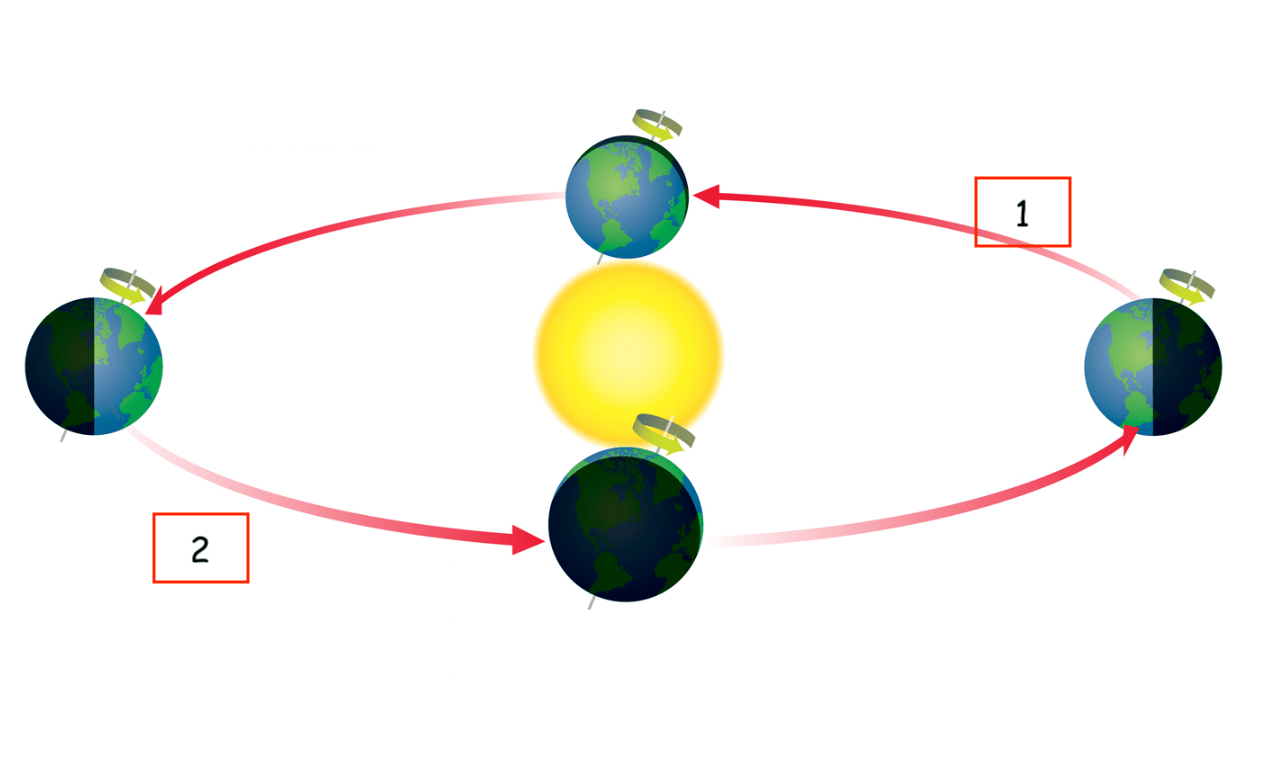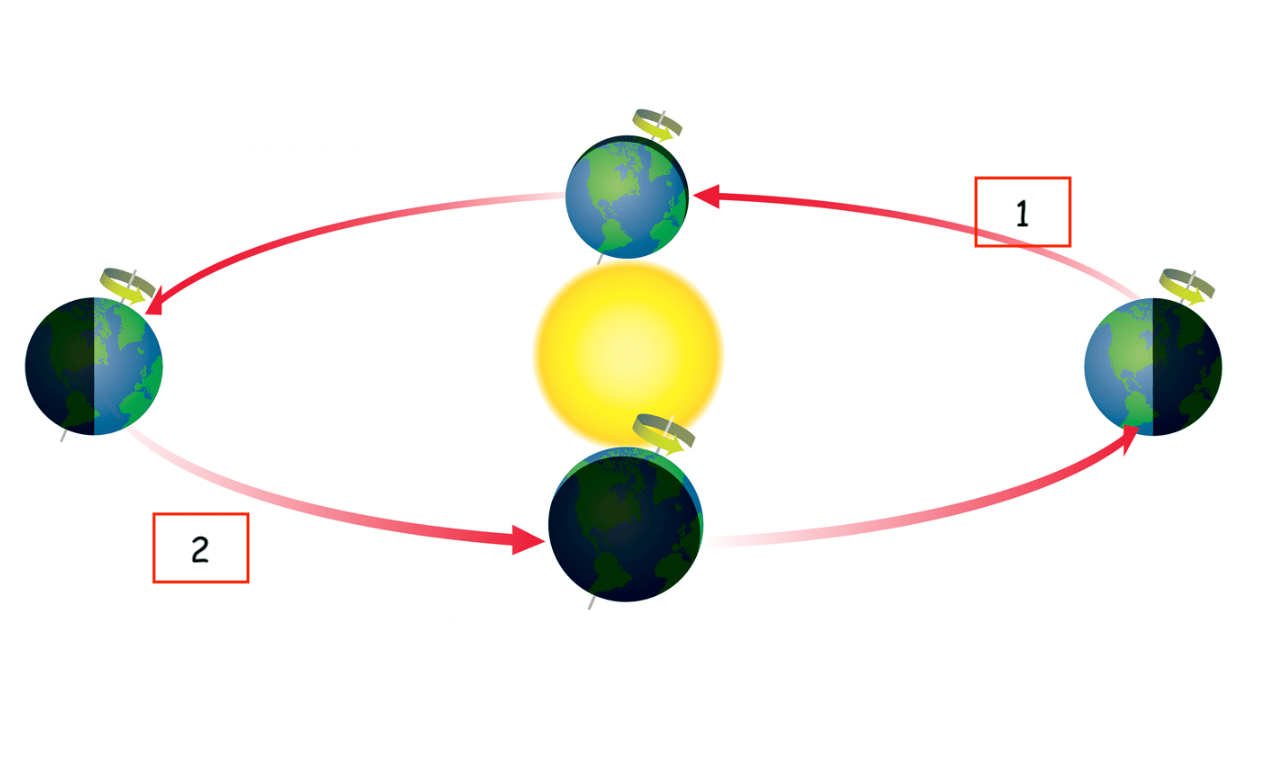True or False: Gravity is a constant force that never stops.
True
The spinning of Earth on its axis
Rotation
As a result of the Earth's rotation around the sun, a certain location gets more _______ in the summer than it does in the winter.
daylight
This phase is when the moon appears to be growing but we can still only see a sliver of it.
Waxing crescent
Earth's gravitational pull draws all object with mass towards what?
24 hours or 1 day
True or False: The tilt of the Earth changes as Earth revolves around the sun.
False - The Earth's always tilts in the same direction and at the same angle.
This phase is when we are able to see a good amount of the moon but it is gradually starting to be less and less visible.
Waning gibbous
Why does the sun's gravity hold the Earth in its orbit?
The sun's mass is much greater than that of Earth or anything else in its orbit.
Earth's motion around the sun
Revolution

In #1:What season is the northern hemisphere experiencing and why?
Winter - the northern hemisphere is tilting away from the sun.
This phase occurs when we are able to see an entire half (or face) of the moon.
Full moon
Name two things in space that are held in orbit by the Earth's gravitational pull.
(1) Satellites
(2) The moon
The Earth's revolution around the sun takes about how long?
365 days or 1 year

In #2: What season is the southern hemisphere likely experiencing?
Winter
Explain the difference between a waxing gibbous and a waning gibbous.
Waxing = more and more is becoming visible
Waning = less and less is becoming visible
What must be true for a rocket to be launched into space?
The force of its engines much be greater than the gravity.
During the day, the sun "appears" to rise in the _____ and set in the _____.
east; west
How does the tilt of the Earth and its revolution around the sun impact the seasons we experience.
When we are tilted away from the sun, we experience more hours of darkness than daylight, which creates winter.
When we are tilted towards the sun, we experience more hours of daylight and fewer hours of dark, which creates summer.
What causes a new moon to not be visible?
During a new moon, the moon's dark, unlighted side faces the Earth. The sun is lighting the opposite side of the moon.